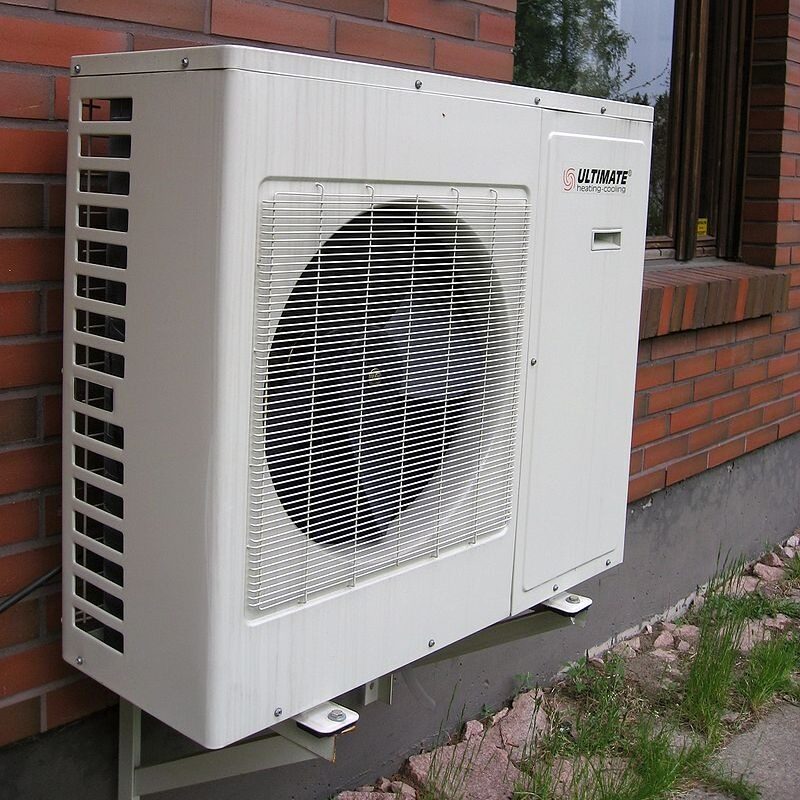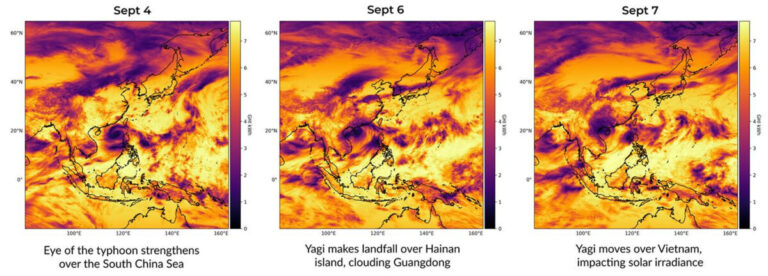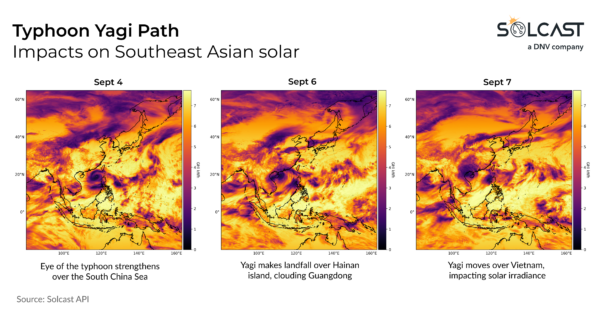In a new weekly update for pv magazineSolcast, a DNV company, reports that Typhoon Yagi caused significant reductions in solar power generation in key cities in Vietnam, China and the Philippines, with some areas reporting their lowest irradiation days on record for September.
Typhoon Yagi has caused a notable drop in solar production in Southeast Asia, according to analyzes using the forecast Solcast API. The powerful Category 5 storm brought extreme weather to the region, causing radiation levels to fall well below climatological averages.
Solar energy production in key cities in Vietnam, China and the Philippines fell significantly, with some areas reporting their lowest irradiation days on record for September. The event underlines the impact of severe weather patterns on solar energy generation, especially in a region vulnerable to tropical cyclones.
Data from Solcast shows that major cities in the tropical cyclone’s path, such as Hanoi, Shenzhen and Manila, were severely affected by Typhoon Yagi’s thick cloud cover and intense rainfall. Irradiance at these locations was drastically reduced compared to September average
conditions, leading to an unprecedented decline in solar energy production.
In the Philippines, the island of Luzon already experienced record rainfall in early September as a result of the southwest monsoon. Typhoon Yagi caused further disruption, bringing even more rain and extending the period of low solar production. This has worsened
challenges for solar energy across the region as both cloud cover and heavy rainfall suppress generation potential.
In addition to its impact on solar energy production, Typhoon Yagi also caused widespread destruction across Southeast Asia. Yagi is the first Category 5 typhoon of the season and one of the strongest to hit the region in decades. Category 5 storms are rare in Southeast Asia, and Yagi’s path, which brought it to northern Vietnam, is particularly unusual.
Most typhoons typically move further east, but Yagi’s westerly path wreaked havoc in countries including the Philippines, Vietnam, southern China, Laos, Thailand and Myanmar. In Vietnam, the aftermath was particularly severe, with days of relentless rain
the landfall of the typhoon, which worsens flooding and further reduces solar energy production.
Solcast produces these figures by tracking clouds and aerosols worldwide at a resolution of 1-2 km, using proprietary satellite data AI/ML algorithms. This data is used to drive irradiance models, allowing Solcast to calculate high-resolution irradiance, with a typical deviation of less than 2%, as well as cloud tracking predictions. This data is used by more than 300 companies that manage more than 150 GW of solar energy worldwide.
The views and opinions expressed in this article are those of the author and do not necessarily reflect those of the author pv magazine.
This content is copyrighted and may not be reused. If you would like to collaborate with us and reuse some of our content, please contact: editors@pv-magazine.com.
Popular content





